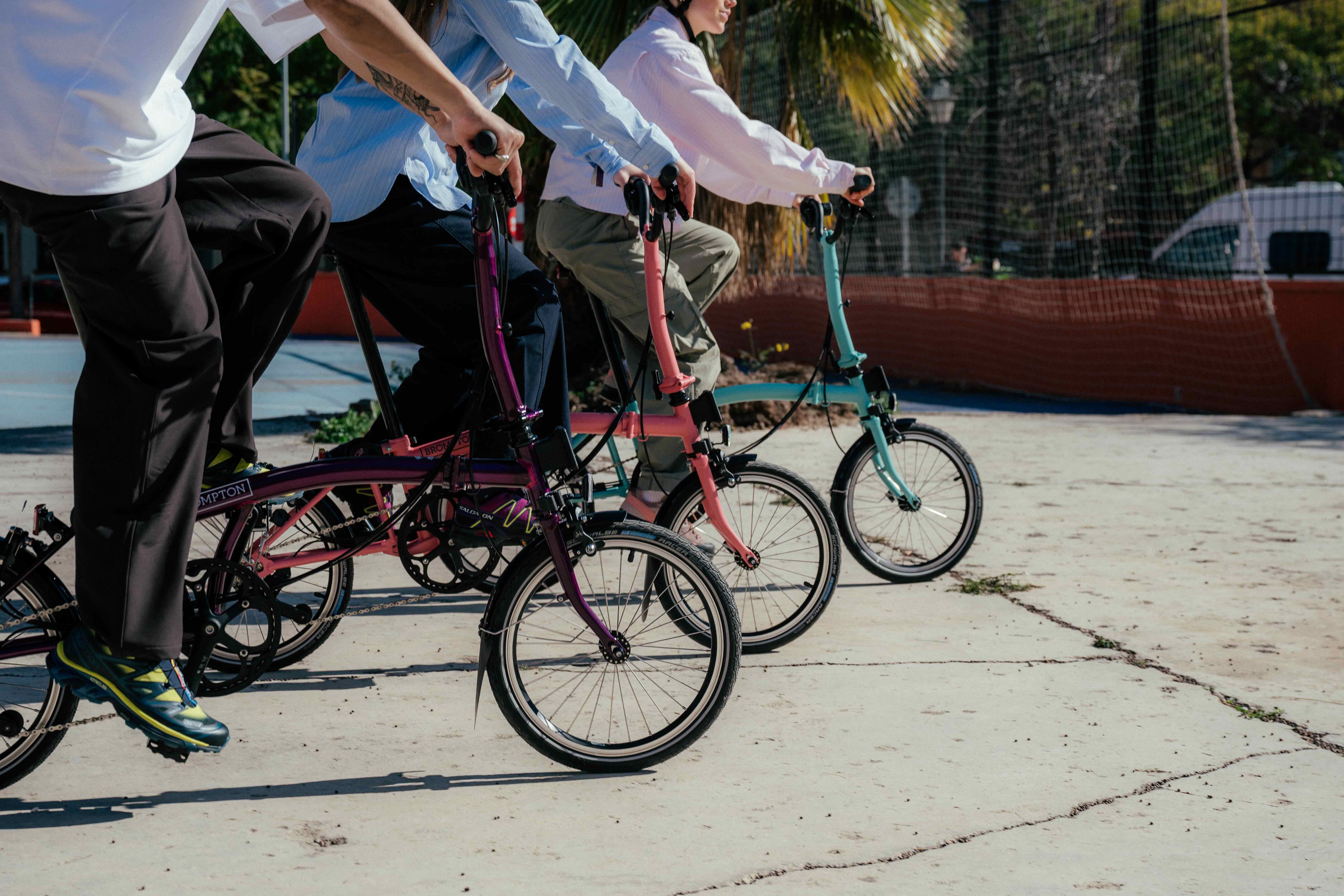Editor's note: A version of this article ran in the April issue of Bicycle Retailer & Industry News.
NEW YORK (BRAIN) — Brompton Bicycle is 50 years old this year, and as it looks to expand sales outside a handful of major cities, the most British of bike brands is getting … a bit cheeky?
New models. New colors. New stores. New — bigger! — wheels.
It all started last fall when the brand introduced its G Line all terrain bikes, featuring 20-inch wheels with 2.125-inch-wide tubeless-ready tires, instead of Brompton’s trademark 16-inch wheels.
The G Line was designed with American riders in mind, with capabilities to get off pavement, said Brompton’s North America president, Juliet Scott-Croxford.
“It’s still got the signature 20-second fold,” Scott-Croxford assured BRAIN in a recent interview. “It’s quite a big move for the company that expands the reach and customer base exponentially. I had a go on it in Arizona recently and it was incredibly fun and also a really robust bike. A lot of people said ‘it just feels like a regular bike,’ but it's still got the lovely quirks that Brompton has,” she said.
The G Line becomes available this spring in pedal-powered versions, with electric models out in the fall.
In March Brompton announced the first 12-speed model of its original C Line bikes. In a lovely quirk, the bike achieves a dozen gears courtesy of a three-speed internal gear hub and a proprietary four-speed cassette and rear derailleur.
“It comes in Flamingo Pink, Amethyst Lacquer, and Turkish Green, because we like to give nice names to our colors,” Scott-Croxford said.
 Brompton opened its second U.S. store, in Washington, D.C., last spring. It joins the brand’s store in Greenwich Village, New York. Besides its company stores and web sales, Brompton has about 150 dealers in the U.S., including about 20 key accounts. In North America Brompton does about half its business direct to consumers and half through its retailers.
Brompton opened its second U.S. store, in Washington, D.C., last spring. It joins the brand’s store in Greenwich Village, New York. Besides its company stores and web sales, Brompton has about 150 dealers in the U.S., including about 20 key accounts. In North America Brompton does about half its business direct to consumers and half through its retailers.
“There is a huge amount of the country that we are not in (with company stores),” Scott-Croxford said. “So that retailer network is really important to us. They have so much expertise as well on the bike; some of them have been selling Bromptons for years. … They are all very active in their cities, whether it’s Phoenix or LA or San Francisco they very much have a pulse not only on Brompton as a brand but their customer base.”
Finances
BGF, a U.K. equity investment company, invested 19 million pounds (about $24 million) in Brompton in 2023. Founder Andrew Ritchie and CEO Will Butler-Adams remain part owners and said the investment would allow them to accelerate the brand’s move into e-bikes.
A financial report filed last December with the U.K.’s Companies House showed Brompton recorded a 5% decline in sales for the fiscal year that ended March 31, 2024, to 123 million pounds ($155 million at March 2024 exchange rates). More ominously, the report showed Brompton’s profits had fallen from over 10.6 million pounds to just 4,600 pounds.
But Scott-Croxford said the decline in profits occurred because Brompton had continued to invest in the company over the year.
“We continued investing, despite those headlines occurring, and that’s why you see the reduction in profits. We are now in a position where we can launch new products, open new stores and do other things. So for us, in a strange way, we are OK with the results as long as we can continue innovating and investing in R&D,” she said.
She said the most recent fiscal year, that ended March 31, 2025, will show an increase in revenue but won’t be dramatically different from the previous fiscal year. The report won’t be released until December.
Tariffs
Brompton continues to manufacture in the United Kingdom — it made and sold 85,000 bikes in the last fiscal year, making it by far the largest bike manufacturer in the country. Earlier this year the U.K. sharply reduced tariffs on Chinese e-bikes, but maintained them on folding e-bikes: a victory for Brompton in its home market.
The U.S. currently imposes an 11% duty on bikes from the U.K., which gives Brompton an advantage in the U.S. over Chinese imports, which are currently subject to 56% tariffs on regular bikes and 45% on e-bikes.
If the Trump administration imposes reciprocal tariffs on U.K. imports, the news wouldn’t be as good: The U.K. currently has a 14% tariff on U.S. bike imports, with a 20% VAT on top of that. The administration has said it considers the VAT a trade barrier that it might match with a reciprocal barrier.




